You no longer need to cover the concrete foundation of your home with expensive flooring materials. Those days are long gone…
Today, minimalist and sophisticated designs highlighting polished concrete flooring are trending. So, are you already convinced that polished concrete is the way to go? Well, you’ve made the best choice for your modern home.
But before you take the required steps towards the idea, it makes sense to know more about polished concrete floors and their benefits. That’s why we’ve curated this in-depth guide to address all your concerns related to the topic, once and for all.
We’ll also help you learn a few tips and tricks to customize and style your polished concrete flooring as per your preference and home decor. Before that, why don’t we understand its basic definition?
So, without further ado, let’s get going.
What Is Polished Concrete Flooring?
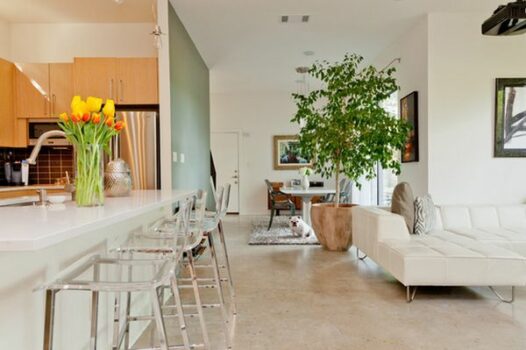
Today, polished concrete flooring is seen in almost every modern household, thanks to its chic and sophisticated appearance. But before diving into the depth of this guide, we find it imperative to define the concept of this type of flooring.
Polished concrete flooring is basically a concrete floor that’s treated with chemical densifiers to fill in its holes and pores. At the same time, it’s ground down using progressively finer tools to give it a polished and smoother finish.
To determine the texture of your concrete floor, you’ll have to consider both its grade and finish – the higher the finish, the shinier the polish, and the higher the grade, the larger the exposed grittiness.
Polished Concrete Flooring: The Appeal
In this section, we’ll highlight the two interior design categories under which polished concrete flooring works the best.
-
The Modern Aesthetic
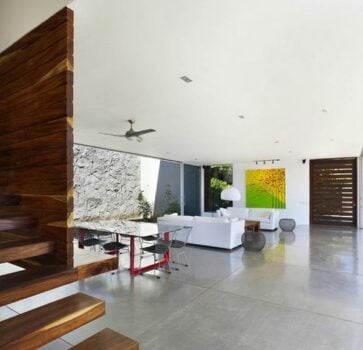
Without a doubt, concrete is a material that works well in all aspects of home interior designs and architecture. But introducing polished concrete flooring into a modern space will enhance its overall aesthetic appeal, especially because of concrete’s minimalist, industrial vibe.
The clean and smooth surface will look good and blend perfectly with the elegant and sophisticated accents of the room.
-
Green Flooring Solution
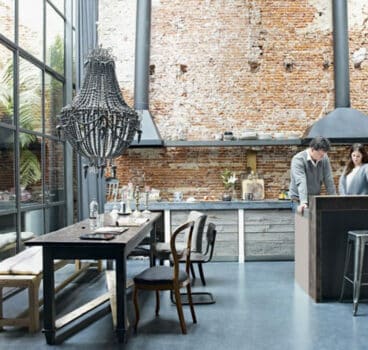
In recent years, interior designers have been opting for eco-friendly materials and components to design a greener home for sustainable living. That said, what could be a better green flooring solution than polished concrete?
By polishing exposed concrete, you eliminate the energy and materials required in putting a floor together, in the literal sense. In other words, it allows you to use the flooring, which is already present – a smart and cost-effective choice indeed!
Customization Tips & Tricks
You can customize your polished concrete flooring to make it stand out from the rest. Just follow our list of tips and tricks provided below:
-
Stains & Dyes
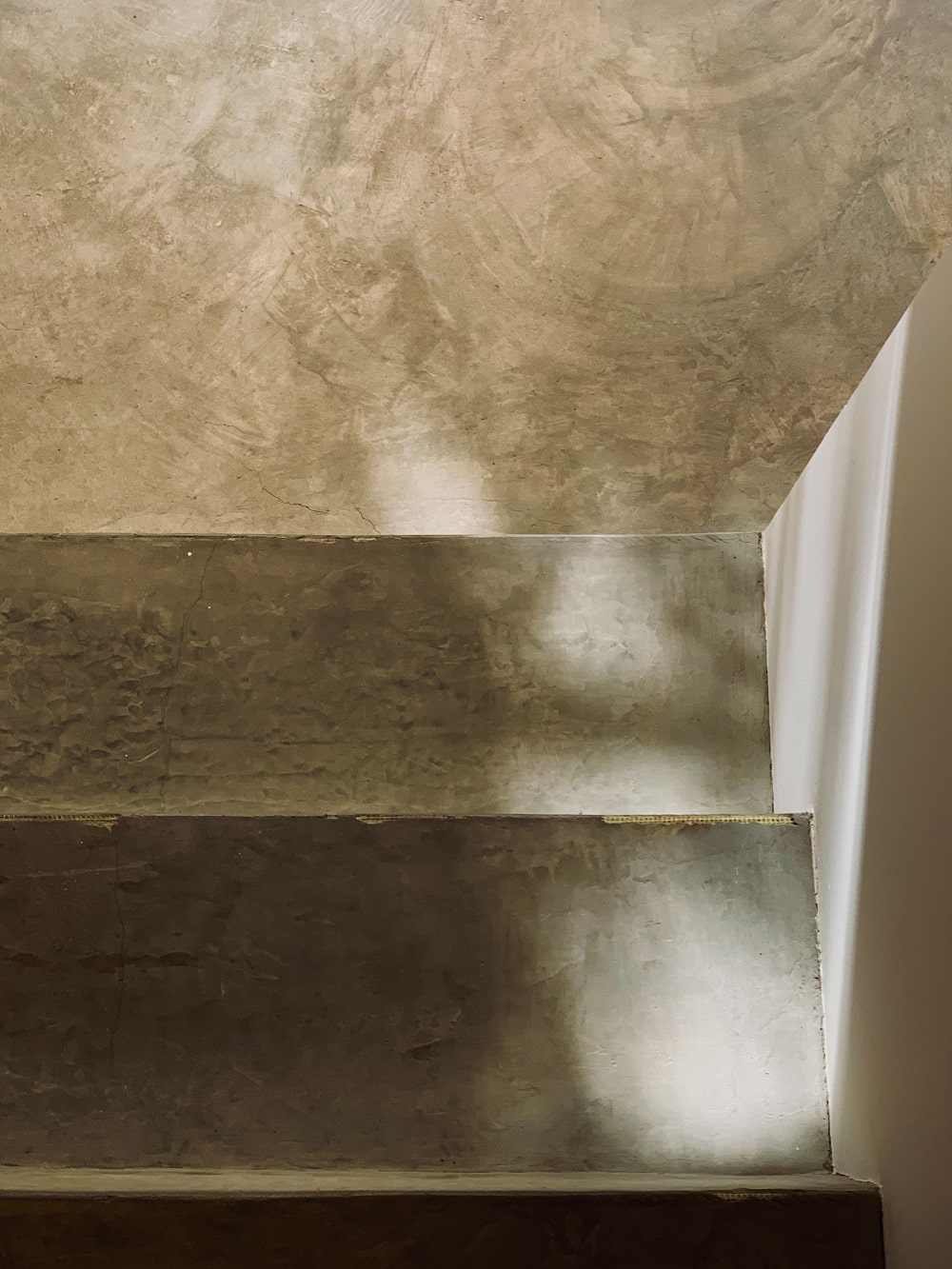
The standard grey concrete flooring may not be the right fit for your space, no matter how polished it is. In such cases, you can always dye or stain concrete to blend it with the color palette and design of the room. This will also enhance the polished look and feel of the floor itself.
-
Using Borders
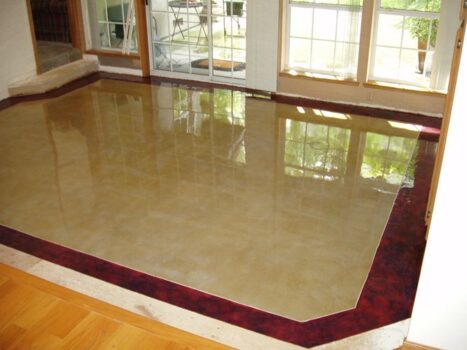
Want to add a sophisticated finishing touch to your concrete flooring? Play around with borders, keeping the color palette of the space in mind. They not only enhance the appearance of the polished concrete flooring but also bring their own inherent sense of style.
-
Scores, Radial Lines, & Designs
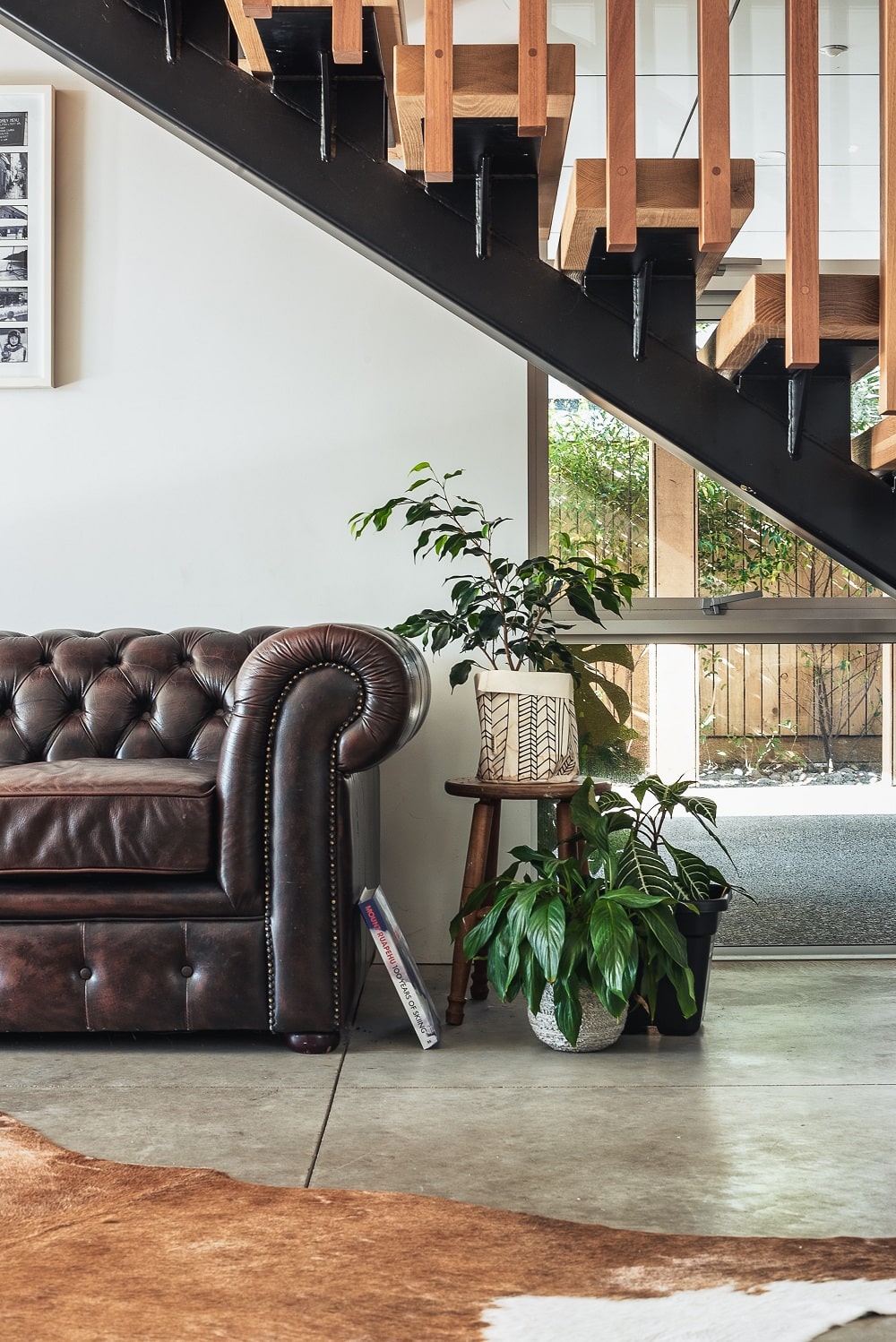
The best part of concrete is that when it’s wet, the surface acts as a blank canvas for you to be creative. It can be customized into any pattern, shape, and design to fit the space better. In other words, concrete flooring can be scored, lined, or gridded as per the required geometry of the room.
Styling Inspiration
Take inspiration from different sources to style your room as per your preference with polished concrete flooring as a constant factor, of course. In this section, we’ll be sharing a few of our styling tips to help transform your regular space into something more dynamic.
-
Soften with a Rug
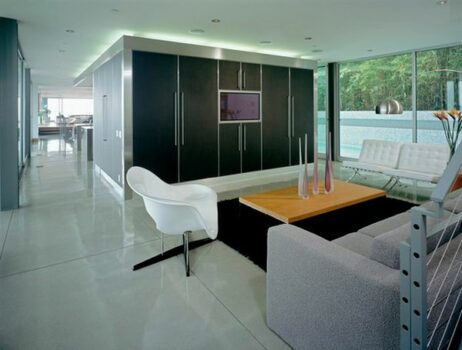
A polished, shiny concrete flooring can come across as overwhelmingly harsh or cold in a minimalist setting. To avoid this, you may soften the aesthetic appeal of the space by placing a plush rug on the floor.
-
Balance It Out
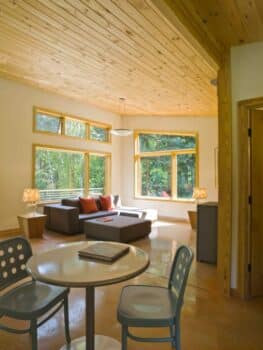
As you already know, concrete has a minimalist, industrial vibe that may not look too welcoming. However, you can balance it out by introducing a few warmer natural elements, such as faux or wood.
-
Contrasting Light & Dark
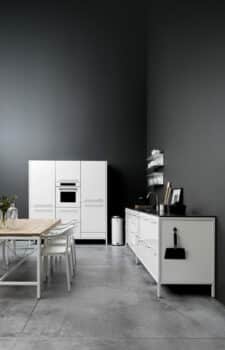
Try adding a crisp and smart aesthetic to the entire space by contrasting white concrete floors with dark walls or dark floors with white walls. This monochromatic design trend is definitely here to stay.
-
Raw Industrial Style
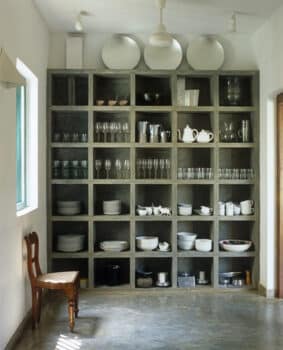
Embrace the rawness of the exposed concrete, and go for the warehouse or industrial style flooring. These days achieving this unfinished aesthetic appeal is what many interior designers strive for.
Benefits Of Polished Concrete Flooring
Now that you’re fully acquainted with polished concrete flooring, it’s time we take you through its benefits. So, let’s take a look.
-
Easy to Clean and Maintain
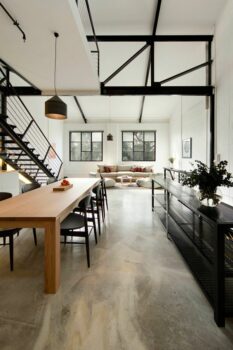
Like concrete, the basic material required for the construction of residential and commercial buildings, polished concrete floors doesn’t need much effort to maintain. All you need to do is mop the floor with soapy water once a week or spot clean with a rag if mopping is too time-consuming for you.
-
Non-Slippery
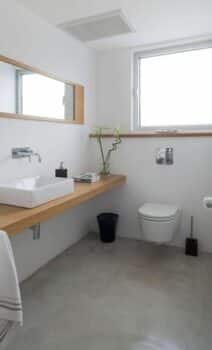
Polished concrete may look and feel smooth as glass, but it’s actually less slippery than polished marble or waxed linoleum. However, for this, you’ll need to always keep the floor clean and dry.
-
Hard-Wearing
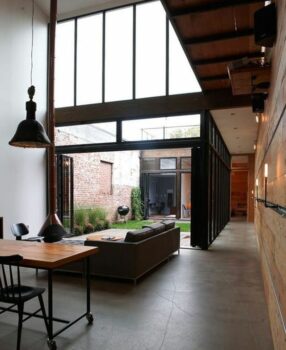
For those who don’t know, polished concrete is more long-lasting and resistant to chips or dents. It can maintain its pristine appearance for a longer period compared to soft flooring surfaces, such as hardwood.
In fact, after it’s polished and hardened, your floor can last you more than 100 years if maintained properly. Comparing this to the average life expectancy of tile flooring, ranging from 10 to 20 years, polished concrete flooring wins hands down.
-
Not Prone to Moisture-Related Damage
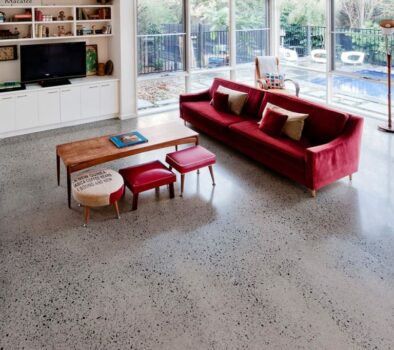
Concrete floors remain resistant to humidity and moisture, so you can rest assured of its long life. That’s not all; this type of floor doesn’t even harbor dust mites, mildew, mold, or other allergens that may cause serious health implications.
Acoustic Properties of Polished Concrete Flooring
While polished concrete flooring is admired for its aesthetic appeal, durability, and ease of maintenance, it’s important to note its acoustical properties. The hard, reflective nature of this material can lead to increased noise levels and echo, especially in larger, high-traffic areas.
Addressing these acoustic challenges requires a comprehensive understanding of sound management techniques. Introducing sound-absorbing elements, such as area rugs, soft furniture, or wall hangings, can reduce noise reflection significantly. These elements, through their texture and material, absorb sound waves and help in managing echo within the room.
For spaces where echo or sound transmission is of specific concern, more extensive soundproofing methods may be required. These can include adding acoustic panels, insulating walls, or employing floor underlayments designed for sound dampening. For a deeper insight into various soundproofing strategies, refer to our guide on tile floor soundproofing. While primarily focused on tile flooring, many of the principles and techniques discussed apply to polished concrete flooring as well.
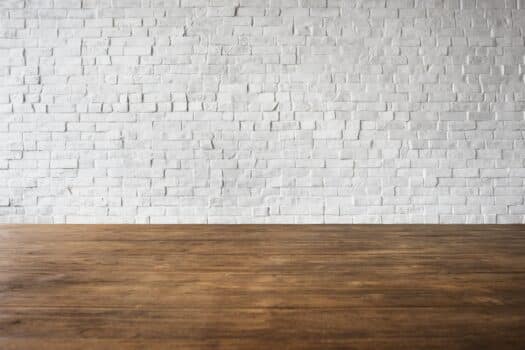
Final Words
Of late, interior designers have been replacing hardwood or ceramic tile floors with polished concrete flooring. This is not just because the latter serves as a cost-effective flooring solution, but it also enhances the aesthetic appeal of any modern or contemporary home decor.
So, if you’re planning on introducing polished concrete floors into your home design plan, you’re headed in the right direction. That said, you don’t have to restrict yourself while styling your personal space; instead, play around with colors and get creative.
And that’s all the time we have today! Here’s hoping this guide helped you gain the required insight on the topic.
With this, we’ll sign off. Till next time!
Related Articles
7 Types Of Flooring To Consider For Your Home
40 Types of Engineered Flooring | Pros, Cons, and Costs
What Color is Mikado and How You Can Use It in Your Home Decor
17 Colors That Go With Yellow + Feng Shui Guide
Colors That Go With Gray and How to Decorate With Gray
51 Epic Gray and White Kitchen Ideas
14 Best Basement Flooring Options Right Now


